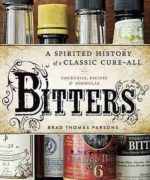Bitterness is a many-faceted experience. Most often however, the un-initiated believe that a bitter taste is wrong, that it signals poisonous or tainted food or drink. Certainly, most would recoil at a mere drop of moxie soda, one of those solidly bitter drinks that tastes of no sugar whatsoever!
Bitterness, one fifth of the five separate tastes we recognize, is one of our most potent and constantly present allies. Even tiny amounts send a strong signal to our brains: watch out—this substance is bitter! A bitter factor in drink or food that has been softened and made palatable by the addition of smoother, less-bitter and even sweet additions, could have healthful benefits we’d otherwise miss out on.
It is fascinating to observe notions about taste. My curiosity about the bitter taste could have something to do with its history and the bitter taste in some vegetables and fruits. I want to know more about the bitter principle in herbalism and shamanism, traditions where the bitter taste is a strong collaborator.
In DIY Bitters by Jovial King and Guido Mase, the herbs themselves—the leaves, flowers, fruits, berries and roots—undergo a specific process to arrive at the final bitters product. The book offers an assortment of recipes for bitters and the drinks they are eventually destined for. Herbs and their medicinal qualities are described as the source of flavor and internal benefits. See my review of DIY Bitters here.
I don’t drink but I’m fascinated by bitters, or the bitter principle, in drinks as well as in food. Bitters represent a collection of botanical substances in solution that offer varying degrees of bitter and sweet. They are standard ingredients in some cocktails, and have for the past decade been enjoying a revival in popularity. Consuming bitters is good for digestion and a whole range of bodily processes that cannot thrive on sweetness alone.
I think bitters’ appeal for me may have something to do with a theory that certain personality traits, like the shyness or reserve of introverted types, secretly mask bravado when it comes to taste. Shy people may be connoisseurs of taste, a part of their true nature which expresses a yearning for exploration and adventure!
Bitters. A Spirited History of a Classic Cure-All with Cocktails, Recipes and Formulas. / Brad Thomas Parsons, 2011. Ten Speed Press. 231 p. including resources, recommended reading and index. Color illustrations.

“Connoisseur of taste” is a way of describing Brad Thomas Parson’s book, Bitters, A Spirited History of a Classic Cure-All …, which is essentially about how to masterfully put together mixed drinks or cocktails. For anyone who appreciates the aesthetics of images that harken to the American wild West and the period of expansion and exploration, Bitters, A Spirited History of a Classic Cure-All will add mood to your dreams about the bitter principle in food and drink.
Parson’s extensive description is lively and passionate. A cocktails enthusiast, he explains how bitters are made, what they taste like and in which drinks they shine most effusively.
If you need to know how to build a Manhattan, an Old-Fashioned or a Sazerac; if it’s the recipes for an East India or a Harvard or a Vieux Carre you need, Parsons’ Bitters provides. Further, you can experiment with Parsons’unique blends in the section, “New-Look Cocktails.” Cooking with bitters is covered for several treats: a vinaigrette, meat glazes, fruits, and desserts.
The primary reason people know about and use bitters is for cocktails. And as Parsons indicates, when all constituents of a drink are mixed and you have forgotten a dash or two of bitters, the drink will fall flat, be unappealing on the tongue, or at worst, taste like just a vapid liquid, not the drink it was named for.
Bitters added to drinks are dispensed with the use of a dasher cap—a kind of dropper cap that allows for quick, agile placement drop by drop, a tiny bit really, over ice, into liquor or syrup. This helpful accessory delivers the right amount of the bitter solution you are using, for most drinks.
Parsons says “just a few dashes”—from the dasher cap—is what’s called for. Peychaud’s, a classic bitter, reveals floral, cherry, and anise flavors, available not by the spoonful but from the dasher cap. A favorite in New Orleans in the early 20th century, Peychaud’s bitters were formulated by Antoine Amitee Peychaud, a chemist and botanist living in the Southern city, was originally from Haiti. Angostura or Regan’s Orange No. 6 are strong orange flavors and also among the classic bitters. The list also includes celery as a favorite for the savory bitters taste.
One delightful, playful aspect is that some bitters have a “nose” that’s completely different from the flavor. Could that be due to a bitters’ combining with our sense of smell to make of the solution something more than the sum of its parts?
Field Guide to Bitters and Amari: 500 bitters 50 amari 123 recipes for Cocktails, Food and Homemade Bitters. / Mark Bitterman, 2015. Andrews McMeel Publishing. 201 pages, color illustrations, index.

Author Bitterman’s approach is to examine all the features of bitters: their ingredients and use both in mixed drinks and cocktails to recipes for appetizers, main dishes, vegetable sides, and sweets. Illustrations of commercially produced and homemade bitters in their respective bottles give insight to the range of bitters products, the flavoring agents that are called “non-potable.” This designation is given because even though the stuff is alcohol or spirit-based, it is not considered fit to drink by itself, but is merely an essence or representative of taste.
What sets this book ahead of most others on bitters is the author’s inclusion of actual field guides—one for bitters, one for Amari—that contain his rating system for three basic qualities of bitters: aromatic, bitter, and sweet. With a bottle in hand, one can peruse the guide to determine how it lines up with other brands of similar taste.
Each of the bitters and the Amari fall into a flavor category such as spicy, aromatic, herbal, floral, etc. and are then rated on a scale of 0 to 5 for their weakness or strength with regard to bitters attributes: aromatic, bitter, and sweet.
The book’s cover material, a kind of coating that appears to be water-proof, or at least spill-proof, sets the tone for the book’s content. It has artistic appeal which might be described as both classic and modern, and the “culinary connoisseurs” essence of good taste.
For homemade instructions, authors Parsons and Bitterman each propose more than a dozen bitters recipes. The authors’ recipes differ in two dimensions: one is in the spirits used to dissolve the botanicals and the other is the basic process. I think it’s interesting to note that while one process will work most of the time, it might also be profitable to try the other process, especially to experience a richer taste.
Parsons’ recipes use a single specified spirit for each recipe but add an unexpected dimension for the botanicals. His recipes have a steeping time of 2 weeks. Then the roots, leaves, flowers, berries (and fresh fruits where indicated) are strained and separately treated and steeped further; later they’re strained and the liquid added back into the spirit-based bitters solution. I don’t know whether that’s a unique method, but it seems to put forward a quality of collecting all the possible goodness from dried botanicals.
Bitterman’s instructions recommend variations on master recipes for herbal, spice, and shrubs bitters. Other recipes include Citrus, Aromatic, Absinthe, and Mint Julep bitters. He recommends steeping for a relatively short time, and uses a combination of two spirits in his recipes.
So, what can a teetotaler take away from all of this intense mixed-drink material? I think there’s a lot of information in both books about taste and the judicious application of the bitter principle. Methods of extracting taste from “botanicals” or herbs—be they berries, leaves, flowers, fruit, or roots—offer variety and richness.
Bitters makers have a litany of ingredients that represent more ideas for bitters recipes and concocting “non-potable” flavoring agents at home. Just think of the shrubs, juices, tonics, and sparkling waters that can use a dash of flavor for extra sparkle… through the creative use of bitters! Try one of the classics in non-alcoholic drinks and food and you might become a connoisseur of taste yourself, not to mention a healthier version of you!
Follow


